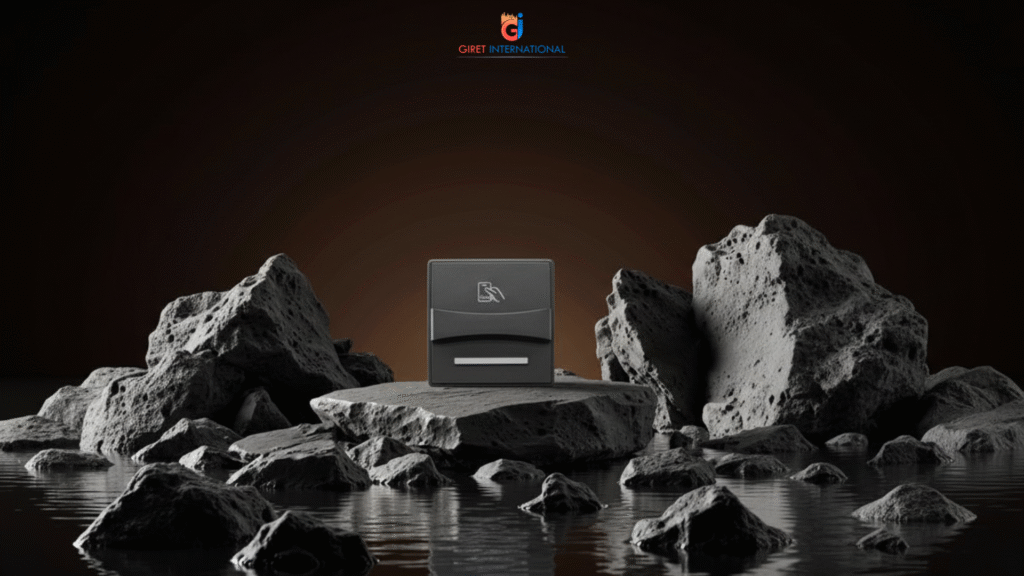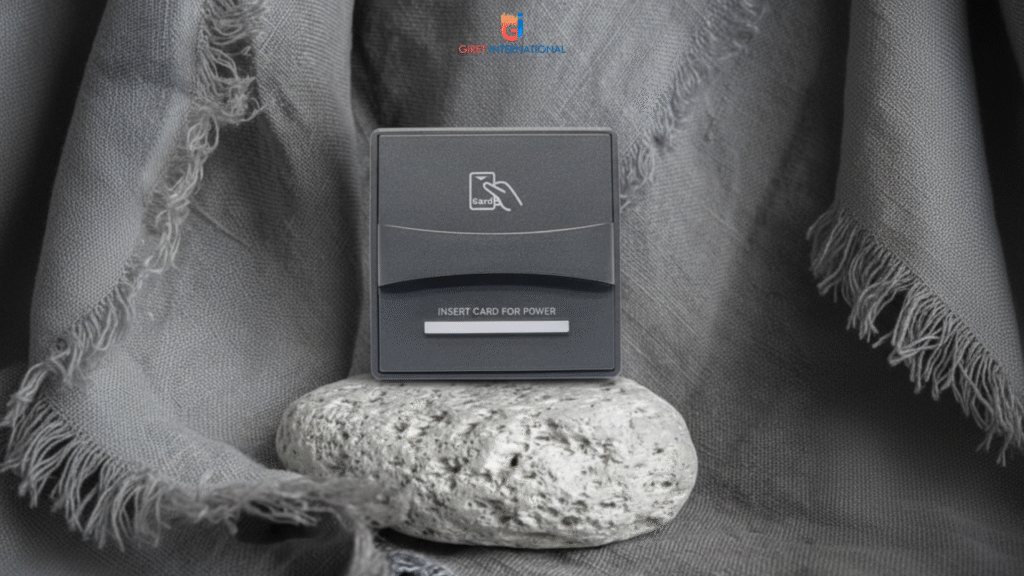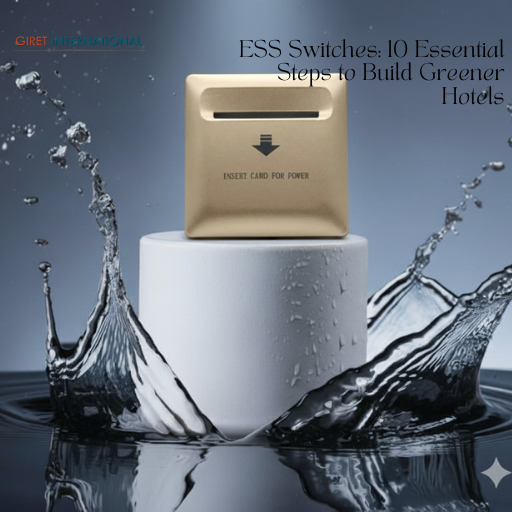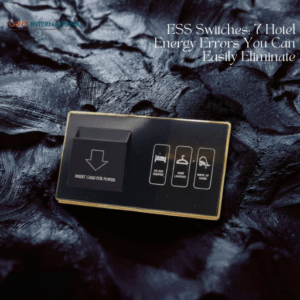Introduction: Why ESS Switches Are Crucial for Greener Hotels
ESS Switches are one of the most impactful technologies for hotels transitioning toward sustainable, energy-efficient operations. In a world where energy prices continue to rise and global travel trends demand eco-conscious hospitality, hotels across categories from boutique to luxury are embracing structured energy control as a core operational strategy.
Modern hotels aim to reduce:
- Energy waste
- Carbon emissions
- HVAC overuse
- Overheating risk
- Unattended appliance load
- Excessive lighting hours
- Electrical inefficiencies
ESS Switches offer a fast, reliable, and cost-effective solution by linking electricity to actual room occupancy, eliminating hours of unnecessary consumption every single day.

As sustainability becomes a competitive advantage, these switches are no longer optional they are essential.
ESS Switches: The Foundation of Sustainable Room Design
A green hotel is one that:
- Uses energy thoughtfully
- Controls wastage automatically
- Protects infrastructure
- Avoids unnecessary emissions
- Empowers both staff and guests to act responsibly
ESS Switches make this possible by operating on precise occupancy logic.
When the guest inserts their MIFARE keycard, room power activates.
When the card is removed, a 20–30 second delay shuts down the entire room.
This simple mechanism ensures:
- No empty room consumes energy
- AC units don’t run pointlessly
- Lighting follows real usage duration
- Appliances don’t produce unnecessary heat
- Electrical load remains stable
In sustainability strategy frameworks, this is one of the most critical upgrades hotels can make with minimal investment.
Understanding the Green Hotel Shift
Global travel behavior is shifting rapidly.
Guests expect hotels to be environmentally responsible.

According to Booking.com’s Sustainable Travel Report:
76% of travelers want to stay in properties that operate sustainably.
Green hotels also benefit from:
- Lower energy bills
- Reduced carbon footprint
- Better brand perception
- Higher review scores
- Compliance with future regulations
- Alignment with certifications such as LEED, GRIHA, IGBC
ESS Switches are directly connected to these objectives.
They provide hotels with the ability to control energy through automation, not guesswork.
10 Essential Steps ESS Switches Enable to Build Greener Hotels
Below are the ten most powerful sustainability enhancements enabled by ESS Switches.
1. ESS Switches Enable Occupancy-Based Energy Control
The first and most impactful sustainability step is connecting energy with presence.
ESS Switches ensure:
- Power ON = guest in room
- Power OFF = guest absent
No manual intervention, no guesswork, no inconsistency.

Occupancy-driven control can reduce room-level electricity usage by 25–45%, depending on hotel design and guest behavior.
This is the foundation of eco-friendly hotel operation.
2. ESS Switches Reduce AC Overuse & Improve HVAC Efficiency
ACs are the largest energy consumers in hotels responsible for nearly 60% of room electricity.
Without ESS Switches:
- Guests forget AC ON
- AC runs in empty room for hours
- Compressor cycles get overloaded
- HVAC systems overheat
- Energy bills soar
- Emissions increase
ESS Switches instantly fix this pattern.
By stopping AC operation in empty rooms, they:
- Reduce power demand
- Improve cooling cycle efficiency
- Lower compressor strain
- Reduce greenhouse gas emissions indirectly
HVAC systems last longer, consume less energy, and operate more safely.
3. ESS Switches Cut Unnecessary Lighting Consumption
Lights are often left ON even when:
- Guests leave for breakfast
- Rooms are empty after checkout
- Housekeeping has stepped out
- Guests forget bathroom lights
ESS Switches ensure all lights follow guest movement.

This results in:
- Fewer operating hours for lamps
- Longer LED lifespan
- Reduced lighting electricity costs
- Lower heat emission (reducing AC load)
Lighting becomes a controlled, intelligent part of sustainability planning.
4. ESS Switches Improve Appliance Safety & Reduce Heat Emissions
Unattended appliances are safety hazards and energy drains.
ESS Switches prevent:
- Overheated irons
- Kettles boiling dry
- Hair dryers left plugged in
- Chargers producing excessive heat
- TVs running for hours without purpose
Each of these actions wastes electricity and generates unwanted heat, forcing AC units to work harder.
By shutting down these devices, ESS Switches improve sustainability by reducing:
- Load
- Heat emissions
- Electrical stress
- Overall consumption
This reduces both energy and repair expenses.
5. ESS Switches Create Structured Power Cycles
Predictability is key to sustainability.
ESS Switches bring structure by ensuring that room power cycles are consistent.

Hotels gain:
- Defined ON/OFF cycles
- Better load distribution
- Stable electrical behavior
- Consistent energy patterns
This helps in planning consumption and reducing sudden spikes.
Structured cycles also improve the efficiency of backup power systems.
6. ESS Switches Reduce Energy Peaks & Stabilize Load
Peak load is expensive and contributes to :
- High utility bills
- Increased generator usage
- Stress on electrical panels
- Higher maintenance requirements
ESS Switches reduce peaks by eliminating unnecessary usage.
With fewer devices running at once, hotels experience:
- Lower maximum demand
- Better electrical stability
- Smoother load curves
- Lower panel heating
This directly contributes to greener operation by reducing strain on electrical infrastructure.
7. ESS Switches Support Renewable Energy Strategies
Hotels investing in solar often face challenges:
- Irregular load
- Unpredictable usage
- Overload on limited solar capacity
ESS Switches stabilize energy behavior, making solar more efficient.

They help renewable systems support:
- More predictable load
- Correct distribution
- Reduced waste
- Lower backup requirement
This alignment makes solar systems more viable and cost-effective.
8 ESS Switches Enhance Engineering Team Efficiency
Green hotels rely heavily on:
- Preventive maintenance
- Scheduled load balancing
- Predictable energy cycles
ESS Switches simplify engineering tasks by:
- Reducing unexpected load spikes
- Lowering AC complaints
- Minimizing overheating incidents
- Reducing appliance failures
Engineering teams spend less time fixing faults and more time improving room efficiency.

9 ESS Switches Extend Equipment Lifespan (Reducing Waste)
Replacing equipment frequently creates:
- Waste
- Landfill pressure
- Financial strain
- Resource consumption
ESS Switches extend the lifespan of:
- AC units
- Lights
- Kettles
- Chargers
- TVs
- Electrical wiring
Less waste = greener operation.
This aligns strongly with environmental policies and long-term sustainability goals.
10 ESS Switches Strengthen Sustainability Certifications
Hotels pursuing:
- LEED
- IGBC
- GRIHA
- EarthCheck
- Green Key
…receive stronger sustainability scoring when ESS Switches are implemented.
These certifications require:
- Energy-efficiency
- Reduced consumption
- Controlled systems
- Lower emissions
ESS Switches help meet these expectations consistently.
ESS Switch Models Supporting Green Hotel Initiatives

Hotels use various ESS Switch models depending on their room category and sustainability goals.
Glass ESS Switches
- Luxury eco-friendly rooms
- Smooth, durable surface
- 40 AMP load handling
- Styled for premium green hotels
JOSH ESS Switches
- High-strength design
- Ideal for mid-range green hotels
- Great for rooms with heavy usage
PC Material ESS Switches
- Versatile
- Cost-effective
- Ideal for large green hotel projects
ESS Combo Panels
- Additional automation options
- Perfect for smart green rooms
Technical Features of ESS Switches That Drive Sustainable Operation
Key features supporting green performance:
- MIFARE-exclusive activation
- Accurate occupancy detection
- 20–30 sec auto shutdown
- Rated high-load durability
- Advanced heat-resistant components
- Stable internal circuitry
- Anti-misuse design
- Long operational lifespan
These features ensure ESS Switches maintain sustainable efficiency across all hotel categories.
How Hotels Can Choose the Right ESS Switch Model

Selection should be based on:
- Room type
- Sustainability target
- Power load requirement
- Hotel design theme
- Automation compatibility
- Card lock system
Installation Insights for Maximum Green Impact
To achieve full sustainability benefits:
- Install ESS Switches at standard height
- Ensure wiring follows BIS/IEC guidelines
- Sync with the correct RFID/MIFARE cards
- Test all circuits post-installation
- Train staff on the function of ESS Switch timing
- Avoid mixing incompatible locking systems
Correct installation amplifies energy savings by up to 35–50%.
Real Eco-Friendly Scenarios Where ESS Switches Transform Hotels
Scenario 1: Guests are out sightseeing for 5–6 hours
ESS Switch ensures zero AC or appliance load during daytime.
Scenario 2: A family forgets bathroom lights
No wasted electricity → lower carbon footprint.
Scenario 3: Chargers left overnight in empty room
ESS Switch stops unnecessary power draw and prevents heat emissions.
Scenario 4: Check-out room left powered
ESS Switch guarantees auto-shutdown → reducing carbon load.
Scenario 5: Solar-powered resort with limited capacity
ESS Switches reduce pressure on solar batteries and inverters.
Sustainability-Focused Closing Summary & Call to Action
ESS Switches deliver some of the strongest sustainability results in the hospitality industry.
They reduce waste, improve efficiency, create predictable energy cycles, and support long-term environmental goals.
For hotels aiming to become greener, cleaner, and more responsible, ESS Switches offer one of the highest returns on investment.
To explore premium ESS Switch options:
➡ Visit Hospitality Products
➡ Check ESS Switch Models
➡ Learn more About Giret International
➡ Contact us for expert guidance
Instagram | Facebook | Pinterest | YouTube | X (Twitter)





